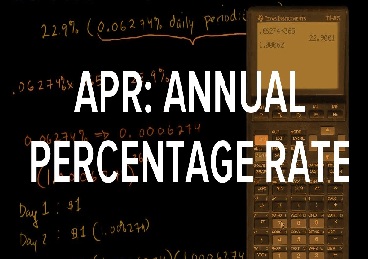What is APR (Annual Percentage Rate)?
APR stands for Annual Percentage Rate. It is the measure of the cost of credits or loans includes interest rate and loan fees paid. If the fees for loan are higher the APR would be high and if there are no fees for loan APR will the same as the rate of interest. APR expresses the rate of interest for the whole year. Generally, it is used to compare the credit cards and different loans as to check which option of borrowing is cheaper.
Sometimes you should pay a high rate of interest or charges on the borrowing money if your APR is at a high rate of return. APR describes you the rate of interest but it doesn’t explain the compounding effects of the interest which included in it. It means you pay interest not only on the principal amount of loan but also on the amount of interest. It will raise the amount of the interest you pay. Here are some guidelines which will help you to avoid high fees on APR as prescribed below:
- First of all, you should pay your interest amount accrued on your borrowings on time. It impacts positively on the lenders. If you are not able to pay the full amount of your outstanding try to pay out maximum amount you can. It will reduce the amount of compound interest component.
- If you feel financial woes because of loss of your job or any other reason you should call or inform your financial institute and tell them about your condition. Most of the financial institute would allow you to pay a lower amount of interest on your borrowing.
- One should maintain a positive credit rating and healthy portfolio as it will impact well on the financial institute while you negotiating with them and help you to provide a loan at a lower rate and fees.
Most Searching Terms:
- Difference Between a Mortgage Interest Rate and an APR
- Introductory Rate Definition
- APR vs Interest Rate
- Average Daily Balance Definition
